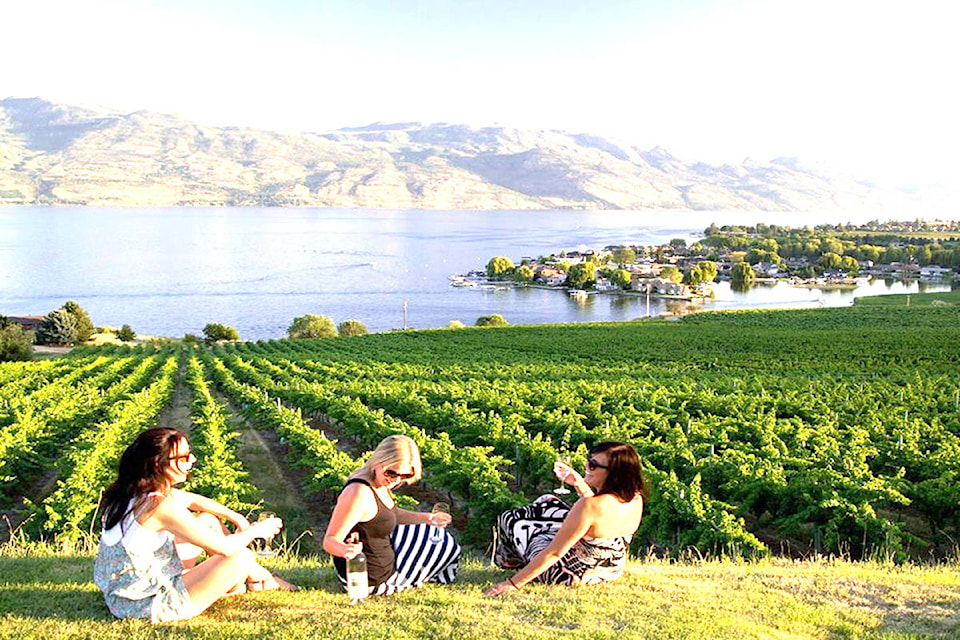It was a challenging summer for the Thompson-Okanagan tourism industry.
Some businesses have absorbed revenue losses in the five to 20 per cent range, while others directly impacted by wildfires have been devastated.
“The stories that get reported back to me, talking to people about the emotions they’ve gone through this summer, can’t help but bring a tear to your eye,” said Glenn Mandziuk, president and chief executive officer of the Thompson Okanagan Tourism Association.
Related: Okanagan grape growers downplay impact of smoke
Within TOTA’s region, Mandziuk said Ashcroft, Spences Bridge and Cache Creek were particularly hard-hit by wildfires, so much so that TOTA has planned a marketing campaign to help draw more fall tourism interest in the Cariboo area.
“We want to help try to get some cash registers ringing a bit more in that area this fall but it’s been a tough summer for many of them, no doubt about it,” Mandziuk said.
Overall, spring flooding coupled with smoke in the sky for most of the summer left a negative impact across the Okanagan Valley, particularly with what TOTA calls short-haul tourism traffic—people coming from elsewhere in B.C. and Alberta.
“Vancouver, Edmonton and Calgary are our core short-haul travel markets for the Okanagan. They make up about 70 to 75 per cent of our tourism traffic in the summer,” he said.
While international tours are booked months in advance and the people come regardless of weather scenarios, people driving here can opt to change their plans at the last minute.
Mandziuk said some communities, such as Kamloops, had positive hotel stay numbers because it was an evacuation centre and was also putting up out-of-town firefighters and fire officials.
The challenge for other hotel operators further south, Mandziuk said, was to be nimble in promoting the diversity of options in the Okanagan available to customers thinking of cancelling their reservations.
“In Osoyoos, they hardly had any smoke during July yet their visit numbers were down and then they got hit with it in August,” he said.
Moving Forward
Looking ahead, Mandziuk said the fundamentals behind tourism, which had experienced banner years in 2015 and 2016, are still strong, but a marketing response to the new climate realities experienced this past spring and summer need to be addressed.
“We have already been talking about that in terms of our marketing approach next year. The key is going to be communication, how do we communicate with our potential customers in a coordinated fashion,” Mandziuk said.
“We don’t want to present an image based on non-factual information, but present that information in the best way we can. We don’t want to sugarcoat that a wildfire is occurring or the lake level is too high for watersports, but we need to capitalize on the diversity of things to show what we can offer tourists.
“Ten or 15 years ago, tourism was all about peaches and beaches, so the perfect storm of what happened this summer would have been disastrous. We have much more diversity of product today to offer. Tourism generates $2 billion in direct economic impact to our region.
“It is a big, big provider economically and there is no way the sky is falling. Tourist visitation is still strong, the weather this year just showed some vulnerability that we will need to shore up.”
Chris Shauf, marketing and communications director with Tourism Kelowna, said the five-to-20-per-cent drop-off in revenue across the region was reflected locally.
“It has been a challenging year for local tourism businesses in this area,” he acknowledged.
While hotel stays were trending close to 2016 numbers, he said some softness was evident at points during the spring and summer.
“We would see spikes in calls or cancellations triggered by something people had seen on the news, or something they had heard from friends and family, leaving them to wonder whether or not to go somewhere else,” Shauf said.
Water-sports related activities such as boating were hard-hit by the high water levels of Okanagan Lake, and the bad smoke days impacted the beach traffic, he said.
“Our visitor information staff made sure to respond to inquiries by passing along up-to-date weather situations, pointing out the many great thing we have to offer and helping people make informed travel decisions,” Shauf said.
To report a typo, email: edit@kelownacapnews.com.
<>@BarryGerding
barry.gerding@blackpress.ca
Like us on Facebook and follow us on Twitter.
